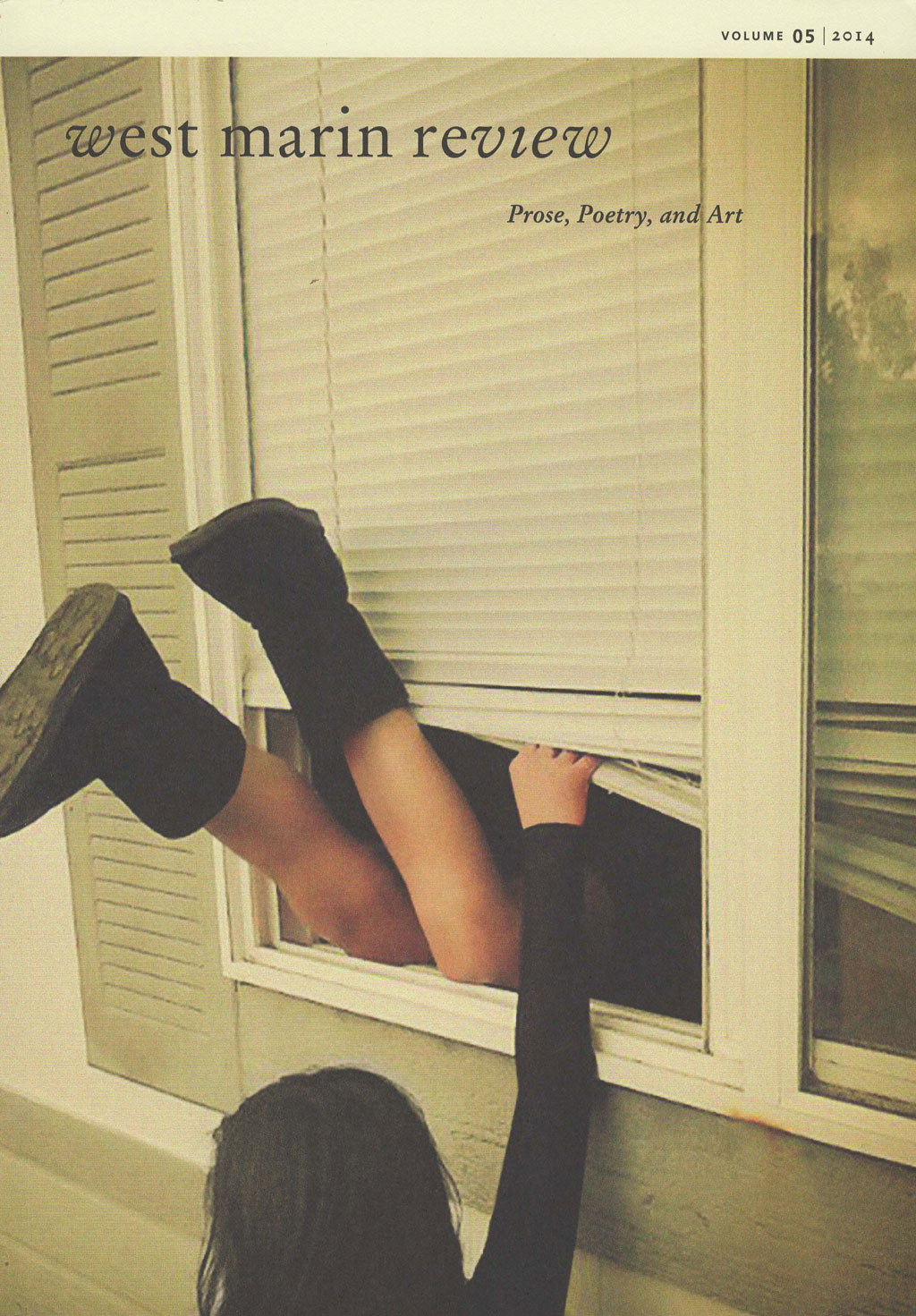West Marin Review – 2014
I ended the review I wrote of West Marin Review 3 (2010) by saying I loved everything in it, even the ads, and I still do, so I will spend the first of my 25-or-so sentences here extolling the commercial plugs in Issue 5 as well: “Spirit Matters: [A Store Providing] Oddities and Deities in the Heart of Inverness Park”; the Point Reyes Music Center, where “Your creativity is our business”; “Flower Power Home and Garden,” with its whimsical blossomy heifer logo; I ended the review I wrote of West Marin Review 3 (2010) by saying I loved everything in it, even the ads, and I still do, so I will spend the first of my 25-or-so sentences here extolling the commercial plugs in Issue 5 as well: “Spirit Matters: [A Store Providing] Oddities and Deities in the Heart of Inverness Park”; the Point Reyes Music Center, where “Your creativity is our business”; “Flower Power Home and Garden,” with its whimsical blossomy heifer logo; the Cowgirl Creamery, offering “Food For Both Writers and Readers!” These and a dozen more back-of-the-issue advertisements proclaim the organic markets, the craft-and-handmade-ceramics studio/shops, the independent newspapers and active chambers of commerce serving environmentally and aesthetically aware folk of all stripes there on the shore of the San Francisco Bay where I was raised and whose worldview resonates so harmonically with mine, though I’ve been away from it for decades. The poetry, prose, and art in this issue reverberate with that vibe. With every piece, I thought: that’s my favorite!
The prose “Poem” by Judith Shaw is about a homeless man leaving trails of dissonance behind him. Two essays profiling difficult but deeply beloved fathers (“Fathers” by Peter Coyote, who “came from nowhere and is working his way back,” and ”Conversations with a Righteous Man” by G. David Miller). The deeply personal nonfiction piece by attorney Tim Foley describes the botched idea of the death penalty in California (“Machinery, Waiting”). The devastating memoir “Shortcake for Breakfast” (Ellen Shehadeh) recounts an effort gone wrong to stay detached and uninvolved. All these pieces solidified my sense of belonging in this issue, the sense that the humanistic Bay Area integrity I grew up with still steadies the entire earth from those undulating hills, that rocky coastline.
The fiction—Lynn Hoggatt’s “Madame Alvida Turns a Card,” for example, though its setting is not the North Bay but France—whispers urgently of wisdom, creation, agency, choice. In fact I think Jennifer Egan missed a jewel, here; this story should have been in Best American Stories 2014, at least as one of the “Other Distinguished Stories” in the back if not up front with the venerated twenty. An aging medium gives her all during a reading that changes more than the life of its subject in this morally provocative story with an accolade-deserving twist at the end.
Frances Lefkowitz, in “Flash Fiction in Two Parts,” gives us two moments of intense womanly emotion whose sentences make stark contact with reality (“A fact is a rare, rare thing, with so many angles of opinion and interpretation. But death is like math, even more irrefutable”). Whimsy, too, has its place—Muriel Murch provides a dog’s-eye view of rural backstreets in “Morning Rounds,” Susan Trott’s “Plain Jain” makes gentle merry with the “ten great religions,” and Carla Steinberg takes us from her Airstream on the California beach to “the length of Mexico” and back in “Snapshots.” Judy Brackett’s “Chicken Crossings” is a charming child’s joke.
And I’ve said nothing yet about the mood-lifting poems, each a gem—but I must especially note one listed in the Table of Contents as prose, Chris Reding’s sensitive “The Summer Palace Vase,” an imagined recounting of the provenance of a long-lost vase from the Qianlan Dynasty, whispered through the centuries. With line breaks and strongly affecting images, surely it’s as much poetry as Linda Pastan’s understated “Peace Process,” Carolyn Losee’s bilingual “First Miwok Poem,” or the ten other brilliants listed as poems.
All the while we’re treated to nature- and heart-focused art, too. Celeste Woo’s droll “Nudibranchs,” knitted from wool and cotton thread, and Claudia Stevens’s frameable watercolor and gouache “Traditional Botanical Paintings” are juxtaposed respectively with Claire Peaslee’s treatise on mole crabs, “The Sand Swimmer,” and “Elders” by botanist Florence Caplow, celebrating bristlecone pines in the White Mountains, the oldest living things on the planet. Four “Self-Reflective Portraits” by eighth-graders at West Marin School, in the style of Frida Kahlo, disclose more about their appealing young artists than they might believe. Dozens of beautifully-reproduced photographs, drawings, and paintings grace this lovingly-designed and well-wrought volume. It’s a pleasure to hold in the hand and eye, every page another treasure. I should have said so sooner.
I confess when I’ve finally ingested every morsel of this gourmet-quality feast of an issue, I want not only to review it with all the positivity it deserves, from the ads to the art, but also to submit my own work, to claim citizenship, to add to the chorus. It would be an honor—for anyone!—to show up in the pages of West Marin Review.
[www.westmarinreview.org]





